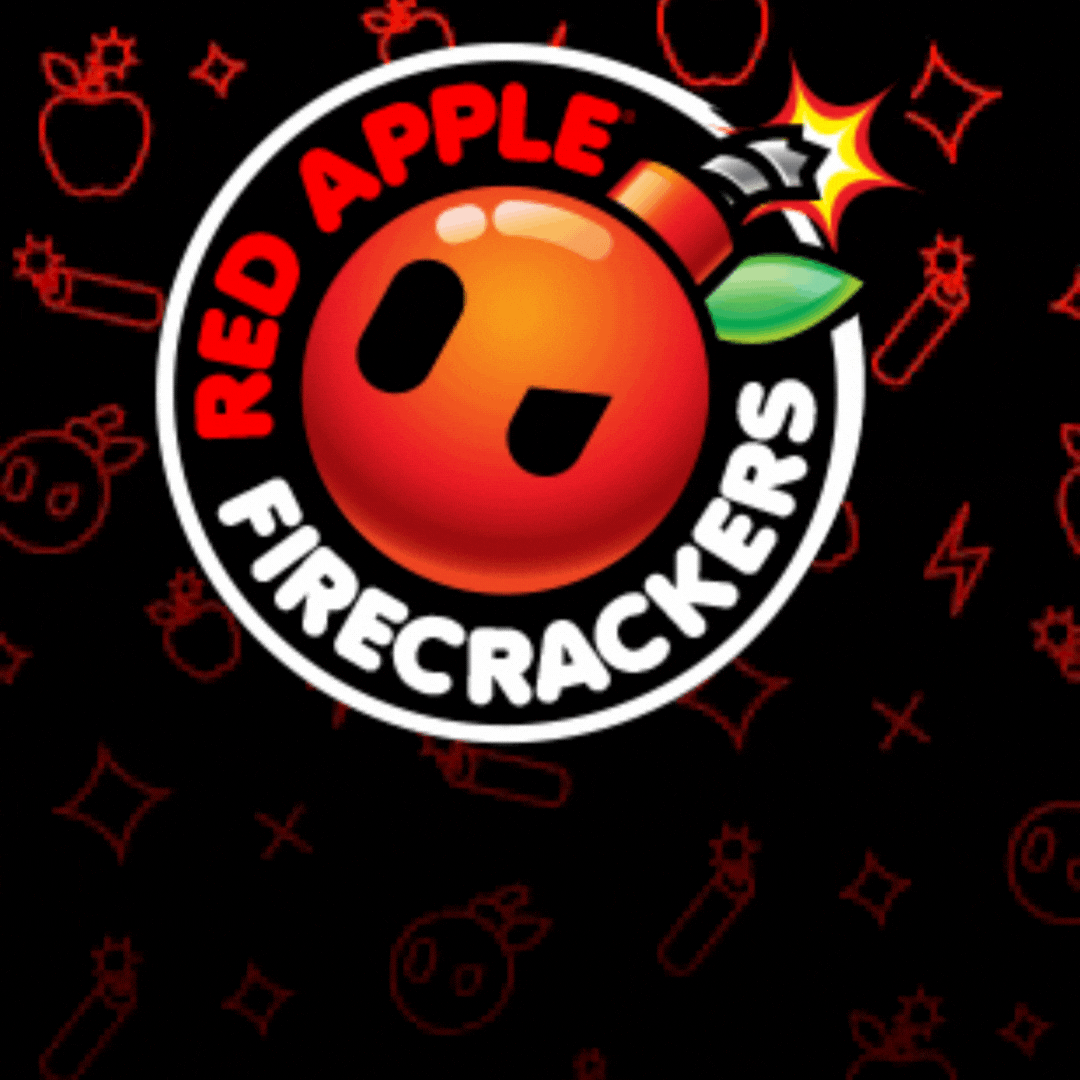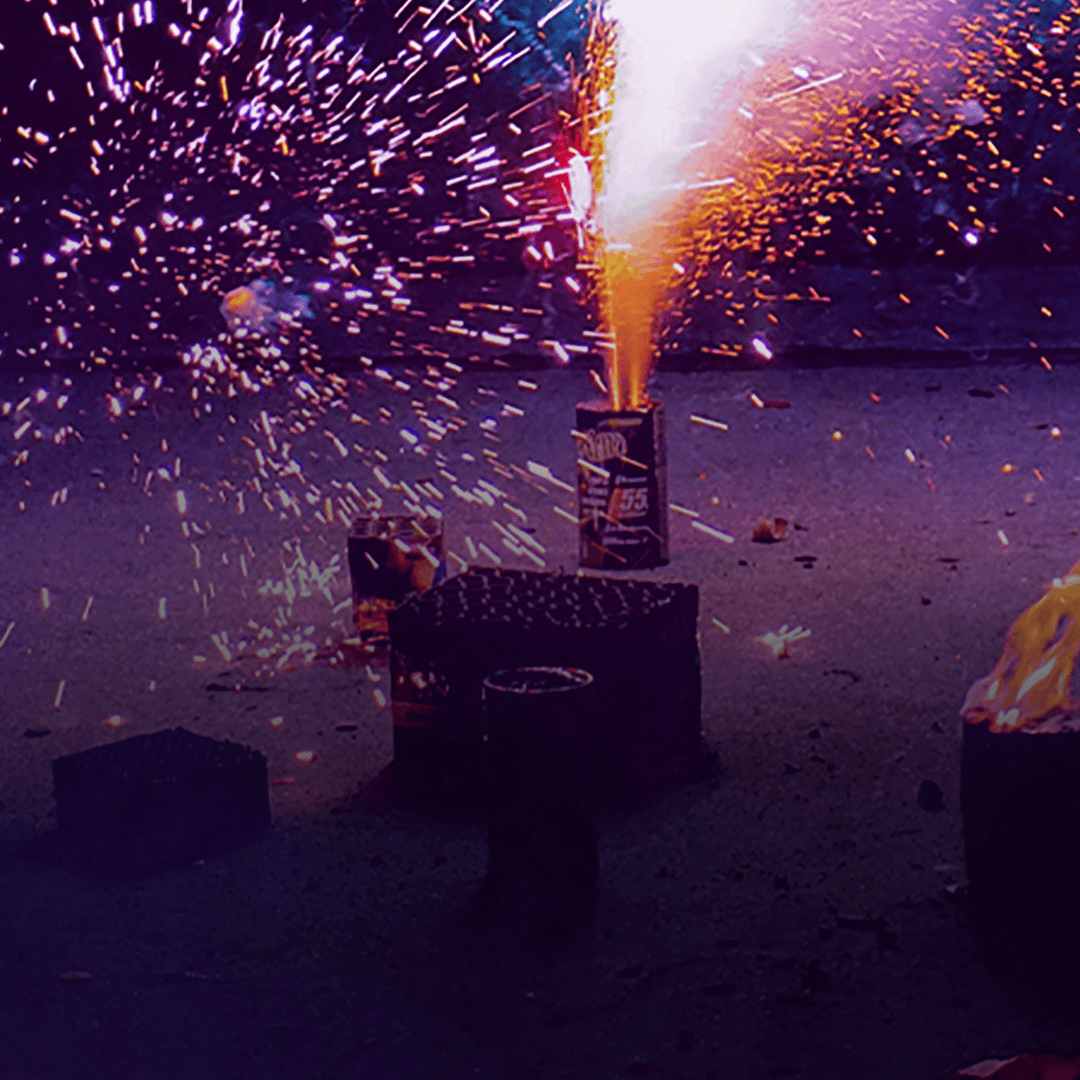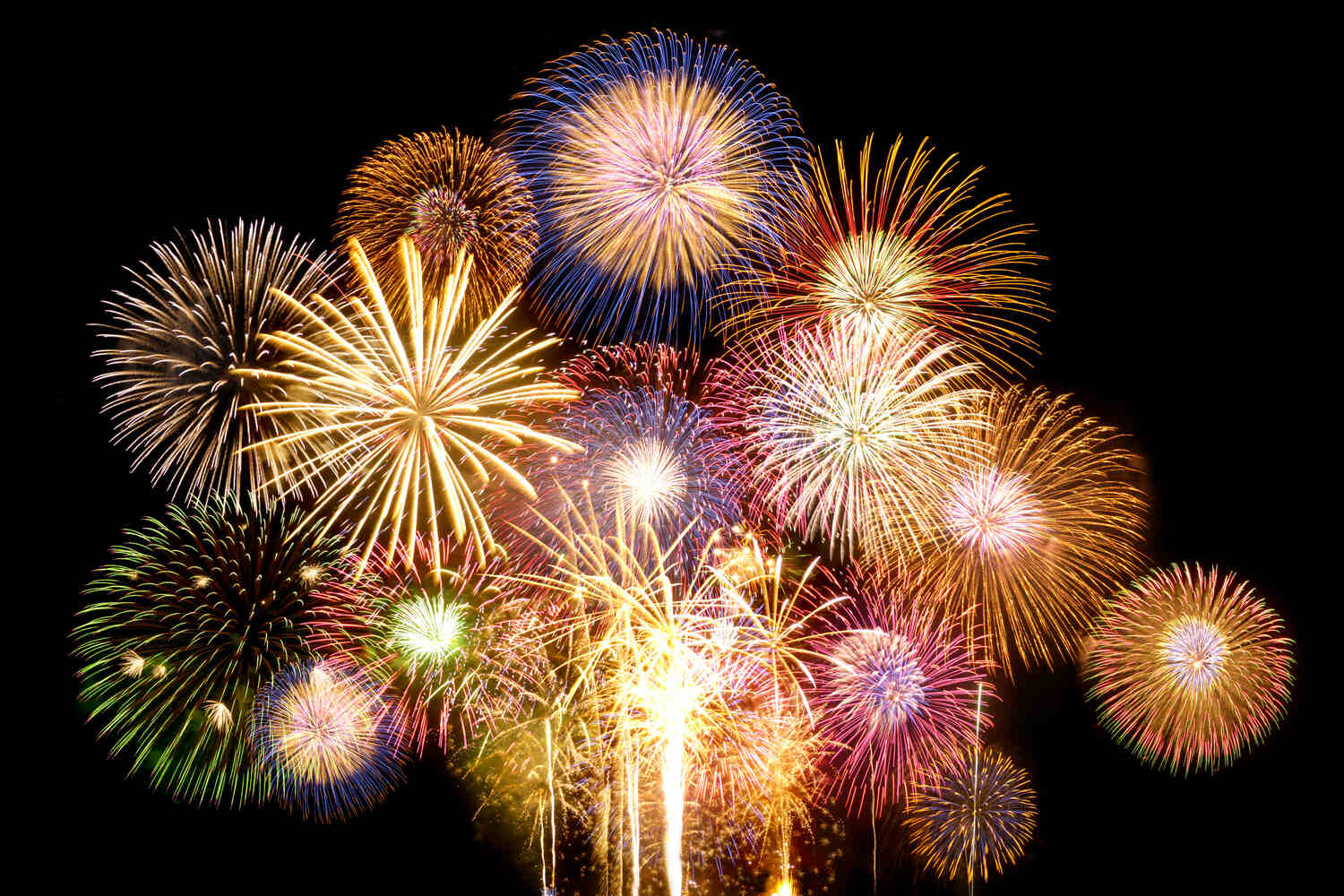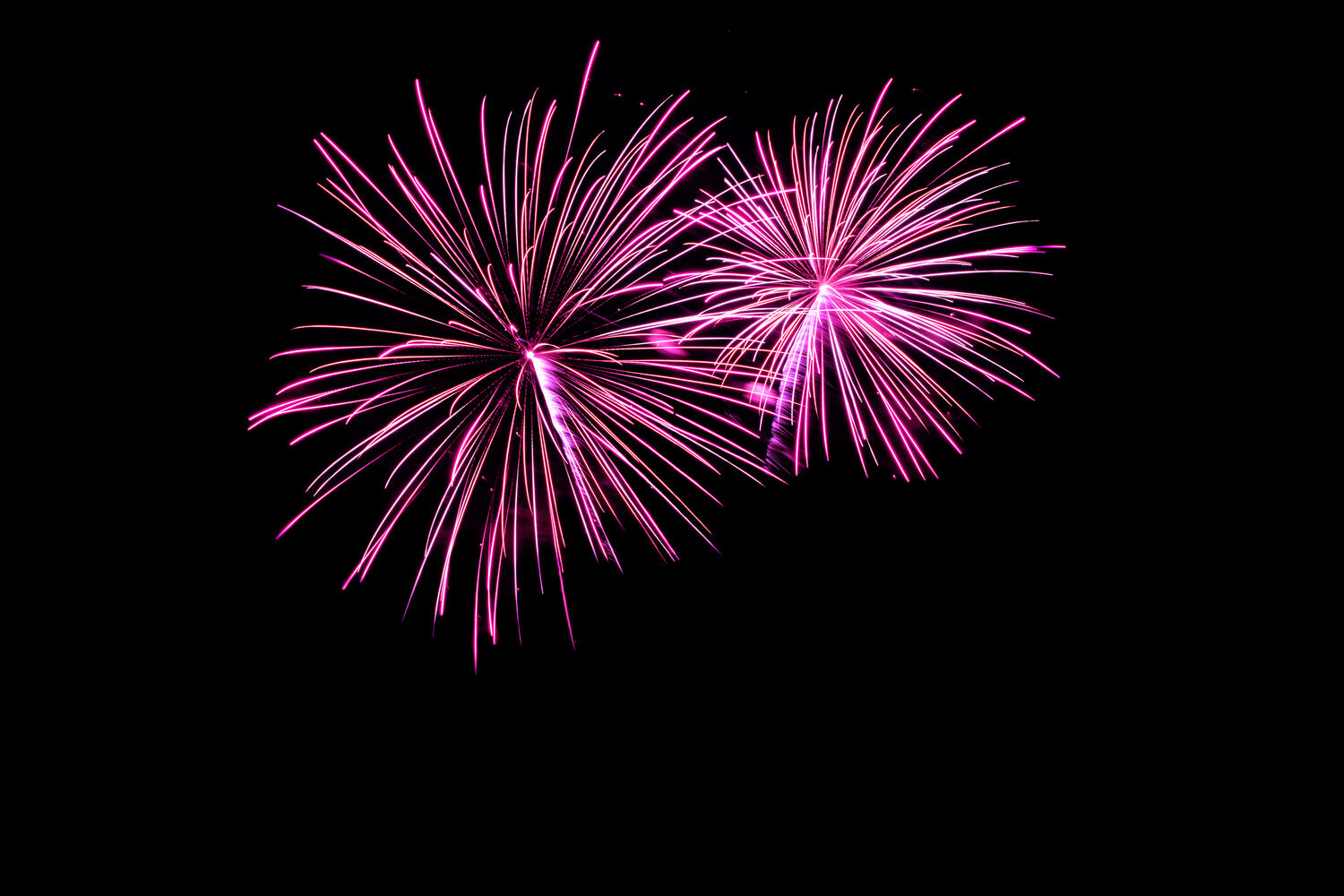Ever looked up at a dazzling fireworks display and wondered exactly how do fireworks work? At Red Apple Fireworks, we're fireworks experts dedicated to bringing excitement to your celebrations.
Whether you're a DIY fireworks enthusiast, planning a memorable family gathering, or an event planner looking to impress your guests, understanding the magic behind fireworks enhances every spectacular experience.
Join us as we reveal the fascinating details behind the sparkle, color, and booming sounds that captivate us all.
What this article covers:
- The Chemistry Behind Fireworks
- How Fireworks are Launched
- The Explosion and Effects of Fireworks
- What Causes the Sounds in Fireworks?
The Chemistry Behind Fireworks
Fireworks are more than just beautiful explosions—they’re powered by carefully engineered chemical reactions.
To truly understand the chemistry of fireworks, you need to look at the key ingredients and how they interact when ignited.
At the core of every firework is black powder—a blend of charcoal, sulfur, and potassium nitrate—which serves as both the fuel and propellant.
But the real magic happens with metallic salts and compounds that generate those vivid colours we all love.
So, how are metallic salts used in fireworks? When these salts are heated, the electrons within the metal atoms become excited.
As the electrons return to their normal energy levels, they release light at specific wavelengths—creating colours like:
- Strontium salts for rich red
- Copper compounds for blue
- Sodium for bright yellow
- Barium for green
- And if you’re wondering—is magnesium used in fireworks? Absolutely. Magnesium is essential for producing intense white sparks and increasing overall brightness in a display.
The type and ratio of these chemical ingredients also determine how long the firework burns, how high it launches, and how safely it performs.
Everything from colour intensity to visual shape is a result of the precise chemistry of fireworks.
At Red Apple Fireworks, our pyrotechnic experts use only high-purity ingredients and expertly balanced formulas to ensure maximum impact, consistent colour, and safe ignition—so you get a spectacular show every time.

How Fireworks are Launched
Launching fireworks is an art and science. Behind every perfectly timed firework is carefully engineered technology.
Fireworks are typically launched from specialized tubes or mortars, placed upright to ensure they fly safely and accurately into the sky.
How Fireworks Are Propelled Into the Sky
The dramatic rise of a firework into the night sky starts with a carefully timed chain reaction—and it all begins with gunpowder.
Once the fuse is lit, it burns toward a component called the lift charge, typically located at the base of the firework shell.
This lift charge contains gunpowder, also known as black powder, a mixture of charcoal, sulfur, and potassium nitrate.
When ignited, it rapidly burns and produces expanding gases that create the explosive force needed to launch the firework upward.
This upward motion follows the principles of rocket propulsion, pushing the firework high into the air before it bursts.
The amount of gunpowder used must be carefully calculated—too little, and the firework won’t reach a safe height; too much, and it could overshoot or behave unpredictably.
Gunpowder doesn’t just get the firework into the air—it also helps create the deep booms and crackles that accompany many displays.
It’s one of the most crucial ingredients in any firework and plays a vital role in both performance and safety.
The Explosion and Effects of Fireworks
The excitement doesn't stop after launching! Once fireworks reach optimal altitude, another fuse—called the time-delay fuse—ignites the explosive charge inside, resulting in the amazing displays we love.
How Fireworks Explode
When fireworks reach the perfect height, the internal explosive charge ignites. Inside each firework are small packets of chemicals called "stars," strategically placed around gunpowder.
As the gunpowder ignites, it rapidly expands, propelling stars outward and creating colorful displays.
Precise timing ensures stunning shapes, colors, and patterns emerge right on cue, thrilling everyone from seasoned DIY enthusiasts to festive holiday families.
How Fireworks Create Shapes and Effects
The colours, shapes, and movement patterns you see in the sky aren’t random—they’re the result of careful engineering inside the firework shell.
Stars are positioned in specific formations—such as rings, hearts, or smiley faces—so when the firework explodes, the stars follow a predictable path to create that shape.
Different chemical compositions within the stars influence how long they burn, how bright they appear, and how quickly they fade. Metallic salts control the colour:
- Copper compounds for blue
- Strontium salts for red
- Barium for green
- Sodium for yellow
Even sparkle, glitter, and crackle effects are planned ahead of time by layering or combining ingredients within the stars.
What Causes the Sounds in Fireworks?
Fireworks don’t just light up the sky—they make it rumble, pop, and sing. Each sound effect is the result of a carefully planned chemical reaction and structural design inside the firework shell.
What Causes the Boom?
The deep boom you hear comes from the rapid expansion of gases during an explosion.
When the burst charge ignites, it creates a powerful shockwave—especially in larger fireworks—which echoes as a loud, thunder-like sound.
What Creates the Crackle?
Crackling effects are caused by metal flakes or fine explosive materials embedded in the stars. As these rapidly ignite in succession, they produce a sizzling, popping sound that adds texture to the visual experience.
Why Do Some Fireworks Whistle?
What makes fireworks whistle? Simply put, whistles are created when specific chemicals—like potassium benzoate—burn inside narrow tubes.
As gases escape through the tube’s small opening, they create high-pitched vibrations, which we hear as a whistle.
Together, these sounds add drama and rhythm to every show, turning fireworks into a full sensory celebration.
Conclusion
Fireworks combine science, chemistry, physics, and pyrotechnic artistry to produce stunning visual and auditory effects.
At Red Apple Fireworks, we pride ourselves on bringing top-quality, safe, and family-friendly fireworks to our customers.
Whether you're planning a DIY backyard show, organizing a grand celebration, or just enjoying a festive holiday with family and friends, understanding how fireworks work adds excitement and appreciation to every explosion of color and sound.
From our missiles fireworks to our novelty fireworks collections, we’ve got everything you need to elevate your next holiday or special event.
Looking for unbeatable deals? Join our Club Red Apple® membership and save up to 25% on your next purchase!
When you become a member, you unlock exclusive perks and benefits that make every firework show even better.
Ready to make your next event unforgettable? Visit Red Apple Fireworks today and let us help you light up the sky!
Did our blog meet your needs? You might also find our other guides helpful:
- When Were Fireworks Invented?
- First American Fireworks
- Facts About Fireworks
- Why Do Celebrate with Fireworks?
- How Do Fireworks Get Their Color?
- What Element Makes Purple Fireworks?
- What Element Will Give Fireworks Their Yellow Color?
- What Chemicals Are Used in Fireworks?
- What Minerals Are Used to Make Gold Sparks Fireworks?
- What Three Processes Cause Fireworks to Emit Light?
- What Problem Occurs If the Firework Mixture Is Not Pure?
- How Are Fireworks Made?
- Where Are Fireworks Made?
- Is There Gunpowder in Fireworks?
-
How to Light Fireworks












Leave a comment
All comments are moderated before being published.
This site is protected by hCaptcha and the hCaptcha Privacy Policy and Terms of Service apply.